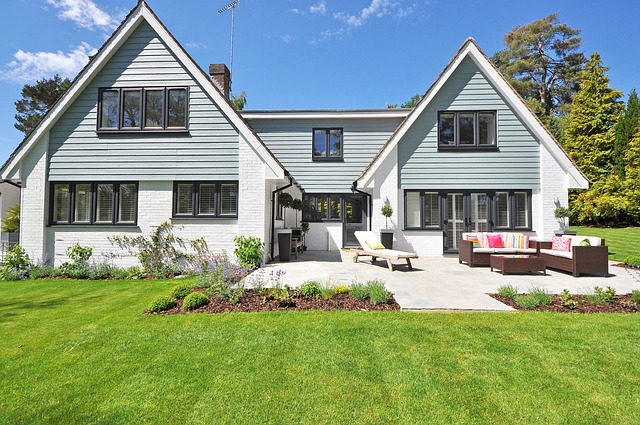Proper roof design goes beyond simply providing shelter from the elements. It plays a vital role in the overall architectural aesthetic and functional efficiency of your home. A well-designed roof not only enhances curb appeal but also boosts your home’s performance in significant, often overlooked ways. This article explores six ways a strategically planned roof design can elevate the practicality, sustainability, and comfort of your living space.
1. Temperature Regulation
A well-constructed roof contributes significantly to the regulation of temperature inside your home. In climates where the summer heat can be intense, a light-colored or reflective roof can help to repel the sun’s rays, reducing the need for air conditioning. Conversely, in colder climates, a darker-colored roof can absorb heat, contributing to a warmer interior.
Proper insulation and ventilation in the roof can prevent heat loss in winter and reduce heat accumulation in summer. This improves home comfort and energy efficiency, resulting in significant savings on utility bills. By selecting an appropriate material from the many Port Saint Lucie roofing options, for example, homeowners can maintain a comfortable indoor climate year-round. Choosing the right roof design and material is crucial for maintaining a consistent and comfortable indoor temperature.
2. Rainwater Management
A well-designed roof plays a crucial role in rainwater management. The right slope and effective guttering system can prevent water buildup and channel rainwater away from your home’s foundation. This helps to prevent structural damage caused by water infiltration and dampness.
Furthermore, by incorporating rainwater harvesting systems into your roof design, you can convert a potential problem into a solution, collecting and storing rainwater for domestic uses. Incorporating such systems is not only environmentally friendly but also reduces dependency on municipal water supply, thereby saving costs. Thus, strategic roof design can turn a common weather element into a valuable resource, enhancing your home’s sustainability and efficiency.
3. Natural Light Utilization
Strategic roof design can also facilitate the optimal utilization of natural light in your home. By incorporating features such as skylights, clerestory windows, and sun tunnels into your roof design, you can bring in ample natural light that illuminates dark corners and reduces the need for artificial lighting during the day. This not only contributes to a brighter and more inviting living space but also reduces energy consumption, resulting in cost savings on electricity bills.
Moreover, the use of natural light has been proven to have positive effects on mental and physical health, enhancing overall well-being and productivity. By thoughtfully incorporating natural light into your roof design, you can elevate the functionality and livability of your home.
4. Solar Panel Integration
In an era of growing environmental consciousness, a well-structured roof can serve as an ideal platform for solar panel integration. This sustainable energy solution not only reduces reliance on non-renewable energy sources but also provides significant cost savings on electricity bills. Moreover, it paves the way towards self-sufficiency, especially in areas where the sun’s energy is abundant.
The architectural design of your roof can also influence the effectiveness of solar panels. For example, a south-facing roof slope in the Northern Hemisphere can maximize the capture of solar energy. Therefore, considering solar panel integration during the roof design phase can significantly contribute to your home’s sustainability and efficiency.
5. Structural Support
A robust roof design not only protects your home from external elements but also provides structural support. The shape, slope, and material of a roof all contribute to its ability to withstand wind, snow, and other environmental factors. By choosing a sturdy and appropriately designed roof, you can ensure the safety and security of your home for years to come.
Furthermore, incorporating additional structural features such as dormers or overhangs into your roof design can add both functionality and aesthetic appeal to your home. These elements not only provide shelter but also serve as architectural accents that elevate the overall look and feel of your home.
6. Durability and Longevity
A thoughtfully designed roof contributes to the durability and longevity of your home. By selecting high-quality materials and ensuring proper installation, your roof can withstand harsh weather conditions and resist wear and tear over time, thereby increasing the lifespan of your home. Regular maintenance further extends the life of your roof, detecting and addressing potential issues before they escalate.
In addition, the roof design and materials chosen can impact the amount of maintenance required. For instance, some roofing materials, like metal or slate, are more durable and require less regular upkeep than others, like asphalt shingles. Thus, the right roof design, material choice, and maintenance regime serve as a long-term investment, safeguarding your home and enhancing its performance over time.
A functional roof design plays a pivotal role in enhancing your home’s performance. From temperature regulation and rainwater management to natural light utilization and structural support, every aspect of your roof design can have a significant impact on the practicality, sustainability, and comfort of your living space. By considering these factors during roof design, homeowners can enhance functionality and efficiency, creating a comfortable and livable environment. Proper roof design goes beyond shelter – it maximizes your home’s potential.







